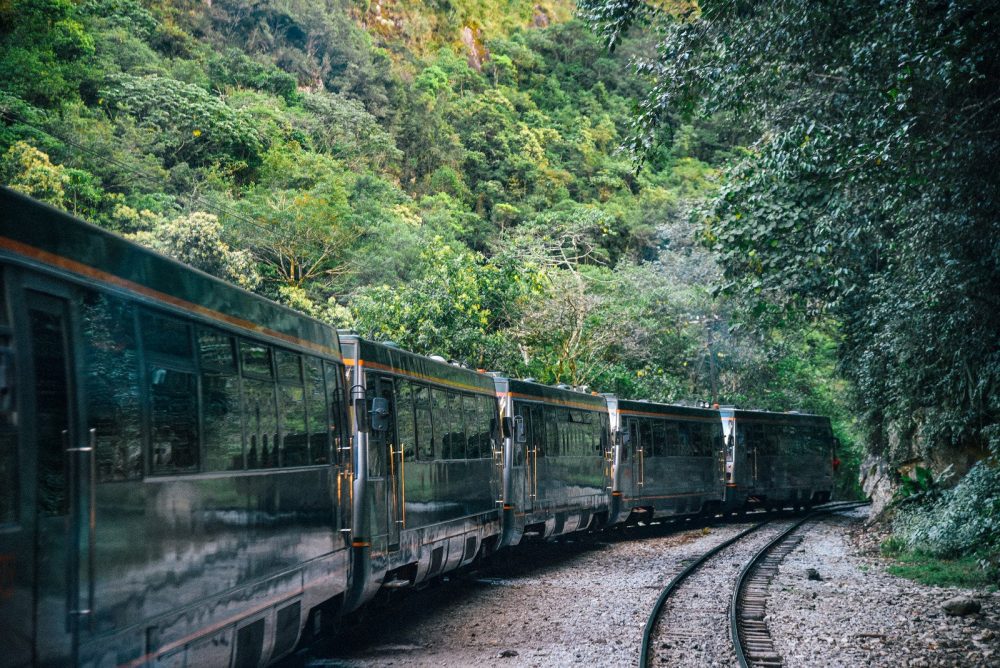This guide to train travel will cover the basics of how trains work, how to find and buy rail passes, how to make a reservation, how to choose your seat, what you should bring with you on a train trip, the different types of trains available for traveling by rail, and some suggested routes for various kinds of travelers.
What are the Benefits of Traveling by Train?
There are many benefits to traveling by train, especially if you are planning a long journey. Trains are much more comfortable than cars or buses, and they offer a unique way to see the countryside. Here are some of the top reasons to travel by train:
1. You can relax and enjoy the scenery.
2. Trains are often faster than cars or buses, especially on longer journeys.
3. You don’t have to worry about traffic jams or road closures.
4. Train stations are usually located in the center of towns and cities, so it’s easy to get around once you arrive at your destination.
5. Traveling by train is one of the most eco-friendly ways to travel.
How to Plan a Rail Journey
There’s something romantic about traveling by train. Perhaps it’s the nostalgia of an earlier era when trains were a primary mode of transportation. Or maybe it’s the leisurely pace and beautiful scenery that can be enjoyed from the comfort of your seat. Whatever the reason, there’s no doubt that taking a rail journey can be a truly wonderful experience.
If you’re thinking about planning a rail journey, here are a few tips to help you get started:
1. Choose Your Destination
The first step is to choose your destination. If you’re not sure where you want to go, start by looking at some travel brochures or searching online for scenic rail routes. Once you’ve decided on a destination, do some research to find out which train companies operate service to that area and what type of tickets they offer.
2. Find the Best Deals on Tickets
Train tickets can be expensive, so it’s important to shop around for the best deals. Try searching online for discount codes or special promotions. You may also be able to find discounts by booking your tickets in advance or traveling during off-peak hours.
3. Plan Your Itinerary
Once you’ve booked your tickets, it’s
Guide to Different Types of Trains
There are a variety of trains that offer different levels of comfort, speed, and scenery. Some trains are better suited for long journeys, while others are more ideal for shorter trips. Below is a guide to the different types of trains available so that you can pick the best one for your needs:
Bullet Train: Also called a high-speed train, these trains can travel up to 320 km/h. They are mostly found in Europe and Asia and are known for being very comfortable and efficient.
Intercity Train: These trains operate between cities and are typically slower than bullet trains. They make frequent stops, which makes them ideal for shorter journeys.
Regional Train: As the name suggests, regional trains operate within a specific region. They make fewer stops than intercity trains and are often used for commuting.
Passenger Train: Passenger trains are the slowest type of train but offer the most scenic routes. They are often used for cross-country journeys and allow passengers to enjoy the scenery along the way.
Tips for Packing
1. When packing for your train journey, be sure to bring along any essential items you will need for the trip. This includes items such as medications, toiletries, and comfortable clothes.
2. It is also a good idea to pack snacks and drinks for the trip, as well as any books or entertainment you may want to enjoy during your journey.
3. To keep your belongings safe while traveling, be sure to keep them in a carry-on bag or backpack that can be stored securely under your seat.
4. When packing your bags, be mindful of the weight and size restrictions that may be in place for luggage on the train.
5. Finally, remember to pack any important documents or tickets you will need for your journey in a safe and accessible place.
Guide to Rail Passes
There are many different types of rail passes available for purchase, and the best pass for you will ultimately depend on your unique travel needs. If you plan on doing a lot of traveling by train, then it may be beneficial to invest in a rail pass.
Rail passes offer unlimited travel on a particular rail network for a set period of time, and can often be purchased at a discount. If you know that you will be doing a lot of rail travel, then a rail pass can end up saving you a significant amount of money.
When considering a rail pass, it is important to make sure that the pass will cover all of the routes that you plan on taking. Some passes only cover certain rail networks, so it is important to do your research ahead of time. In addition, make sure to factor in the cost of any additional fees or surcharges that may apply to your journey.
With so many different types of rail passes available, it can be difficult to choose the right one for your needs. However, with some careful planning and research, you can find the perfect rail pass for your next train journey.
How to Get the Best Deal on a Train Ticket
If you’re looking to travel by train, you’ll want to make sure you get the best deal on your ticket. Here are a few tips to help you do just that:
1. Compare prices. Don’t just go with the first train ticket you find. Take some time to compare prices from different companies. You may be able to find a better deal this way.
2. Look for discounts. There are often discounts available for train travel. Check websites like Rail Europe and Trainline for deals before you book your ticket.
3. Book in advance. If you know when you want to travel, booking your ticket in advance can sometimes get you a cheaper fare. This is especially true if you’re traveling during peak times or on popular routes.
4. Be flexible with your dates and times. If you’re willing to be flexible with when you travel, you may be able to find cheaper tickets. For example, off-peak times and midweek journeys are usually cheaper than peak times and weekends.
5. Consider alternative routes. Sometimes, taking a slightly different route can be cheaper than taking the direct route. It’s worth considering all of your options before booking your ticket.
By
Traveling with Children: Tips for Planning Ahead
When you’re planning a rail journey with children, it’s important to think about a few things in advance. Here are some tips to help make your trip go more smoothly:
– Choose a route that’s interesting for kids. If they’re bored, they’ll be more likely to cause trouble.
– Bring along plenty of snacks and drinks, and pack some activities to keep them occupied.
– Make sure you have your tickets and reservations sorted out in advance.
– If possible, try to get a seat with extra legroom so the kids can stretch out.
With a little planning, traveling by train with children can be a fun and hassle-free experience.








